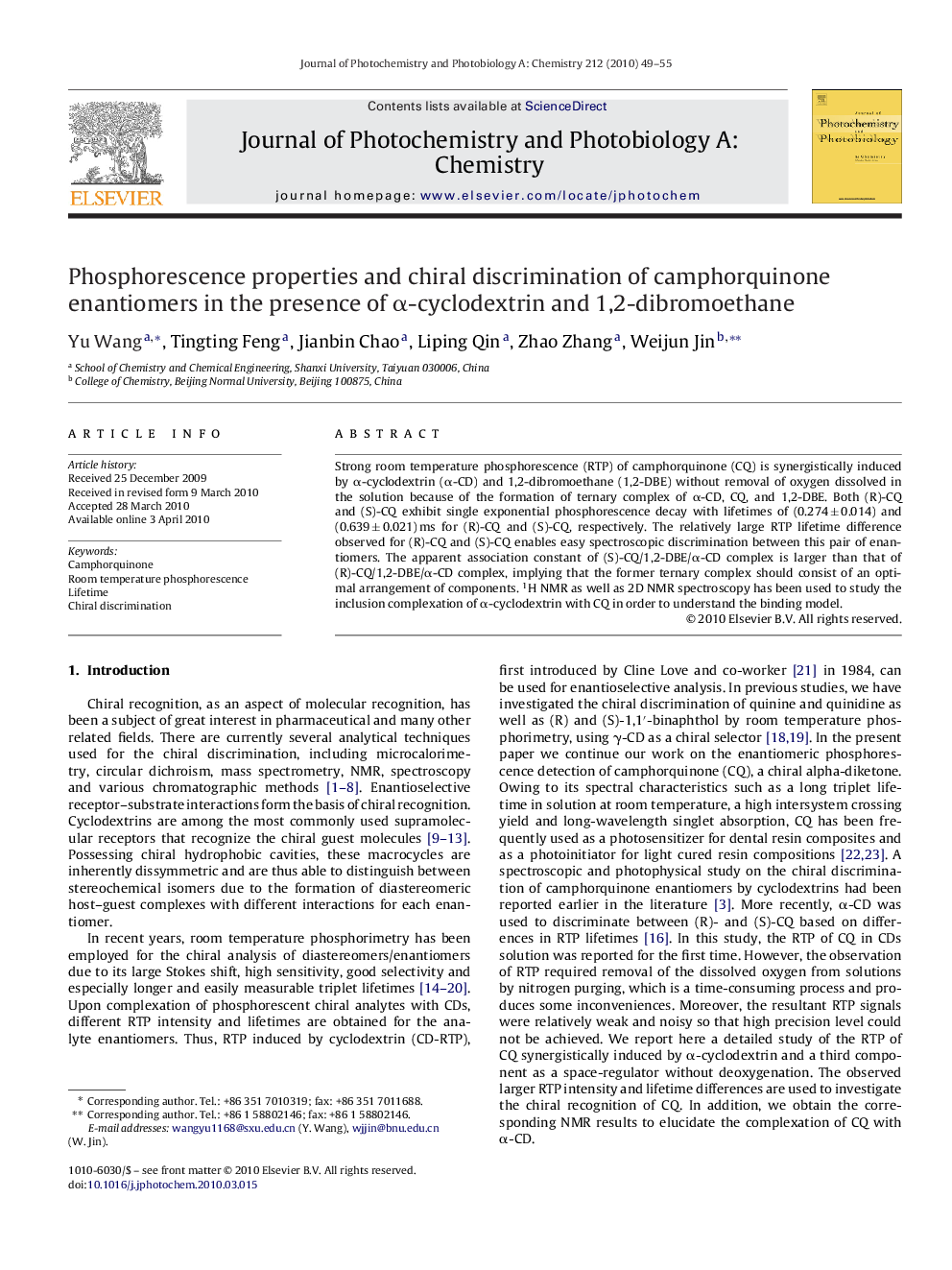| Article ID | Journal | Published Year | Pages | File Type |
|---|---|---|---|---|
| 27927 | Journal of Photochemistry and Photobiology A: Chemistry | 2010 | 7 Pages |
Strong room temperature phosphorescence (RTP) of camphorquinone (CQ) is synergistically induced by α-cyclodextrin (α-CD) and 1,2-dibromoethane (1,2-DBE) without removal of oxygen dissolved in the solution because of the formation of ternary complex of α-CD, CQ, and 1,2-DBE. Both (R)-CQ and (S)-CQ exhibit single exponential phosphorescence decay with lifetimes of (0.274 ± 0.014) and (0.639 ± 0.021) ms for (R)-CQ and (S)-CQ, respectively. The relatively large RTP lifetime difference observed for (R)-CQ and (S)-CQ enables easy spectroscopic discrimination between this pair of enantiomers. The apparent association constant of (S)-CQ/1,2-DBE/α-CD complex is larger than that of (R)-CQ/1,2-DBE/α-CD complex, implying that the former ternary complex should consist of an optimal arrangement of components. 1H NMR as well as 2D NMR spectroscopy has been used to study the inclusion complexation of α-cyclodextrin with CQ in order to understand the binding model.
